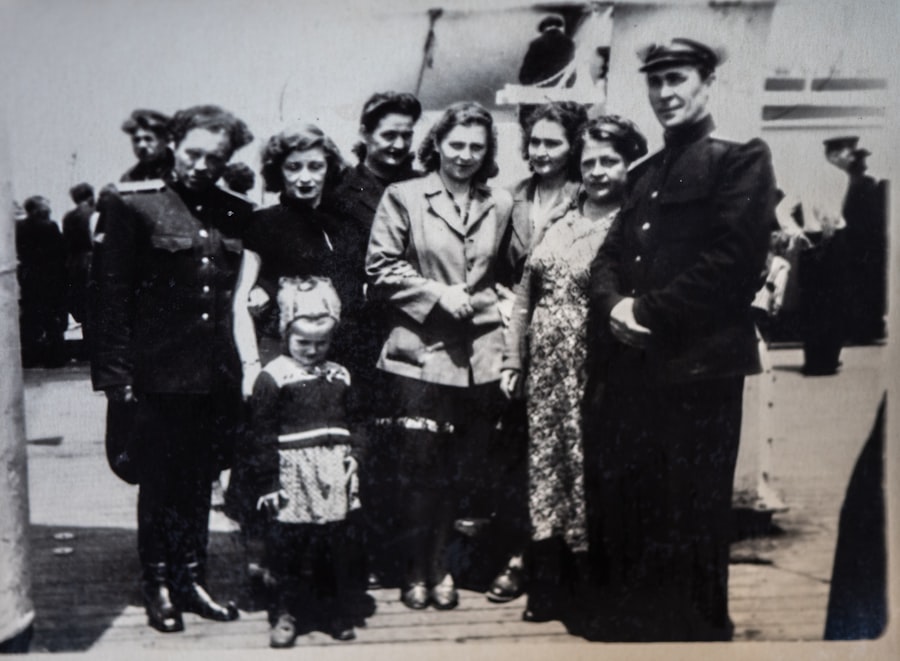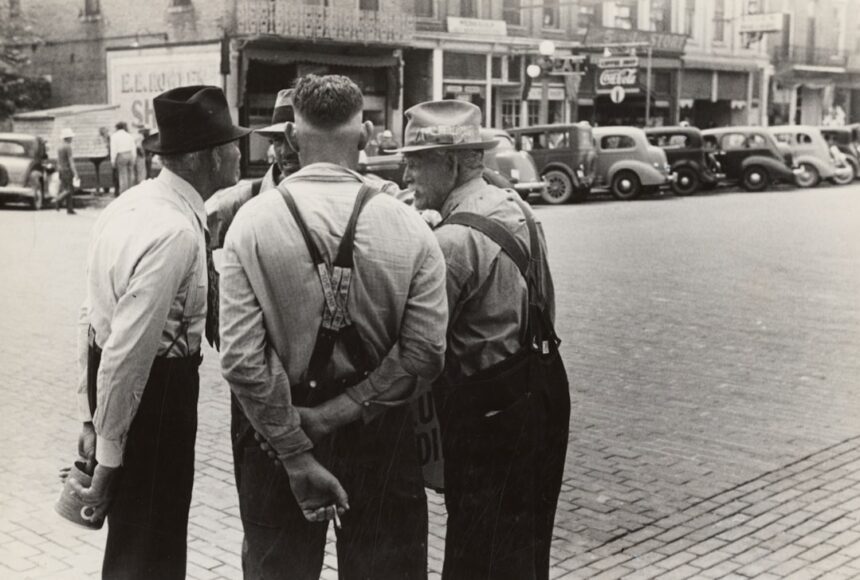During World War II, the threat of sabotage loomed large over the United States as the nation found itself embroiled in a global conflict. Among the most audacious attempts to undermine American war efforts was the mission undertaken by a group of Nazi saboteurs. In June 1942, eight men, trained in espionage and sabotage techniques, were dispatched from Germany with a singular goal: to wreak havoc on American infrastructure and disrupt the war production that was vital to the Allied cause.
Their mission was not merely one of destruction; it was a calculated effort to instill fear and uncertainty within the American populace, thereby weakening the resolve of the nation. The saboteurs arrived on American soil via U-boat, landing on the shores of Long Island, New York, and later in Florida. Armed with explosives and a detailed plan, they aimed to target key facilities, including factories, railroads, and bridges.
Their strategy was to create chaos and divert resources away from the war effort, hoping to demoralize both the military and civilian populations. The audacity of their mission was matched only by its potential consequences; had they succeeded, the ramifications could have been catastrophic for the United States during a time when it was still finding its footing in the war.
Key Takeaways
- The Nazi saboteurs’ mission in the United States aimed to disrupt American infrastructure and sow fear and chaos.
- The capture of the Nazi saboteurs was a significant victory for US law enforcement and intelligence agencies.
- The trial and sentencing of the Nazi saboteurs resulted in the execution of six of the eight men involved.
- The public reaction to the Nazi saboteurs’ capture and execution was mixed, with some expressing relief and others feeling uneasy about the severity of the punishment.
- The impact of the Nazi saboteurs’ mission on US security led to increased vigilance and measures to prevent future foreign sabotage.
- The legacy of the Nazi saboteurs’ capture and execution serves as a reminder of the ongoing threat of foreign sabotage in the US.
- The role of the FBI in preventing Nazi sabotage in the US was crucial in thwarting the saboteurs’ plans and bringing them to justice.
- Lessons learned from the Nazi saboteurs’ mission include the importance of strong intelligence and law enforcement efforts to counter foreign threats.
- The continued threat of foreign sabotage in the US underscores the need for ongoing vigilance and preparedness.
- Remembering the victims of Nazi sabotage in the United States is a solemn reminder of the real impact of foreign threats on American soil.
The Capture of the Nazi Saboteurs
The capture of the Nazi saboteurs was as dramatic as their mission itself. Shortly after their arrival, one of the saboteurs, George John Dasch, began to have second thoughts about their undertaking. He recognized that their plans were fraught with danger and that their chances of success were dwindling.
In a surprising turn of events, Dasch decided to turn himself in to the FBI, providing crucial information about the group’s intentions and identities.
The FBI acted swiftly upon receiving Dasch’s information.
Within days, agents apprehended the remaining members of the group. The capture was not without its challenges; the saboteurs had initially managed to evade detection, blending into American society as they attempted to execute their plans. However, thanks to Dasch’s cooperation and the diligent work of law enforcement, all eight men were eventually captured.
This swift action not only prevented potential sabotage but also underscored the effectiveness of American intelligence and law enforcement during a time of crisis.
The Trial and Sentencing of the Nazi Saboteurs

Following their capture, the Nazi saboteurs were swiftly brought to trial in a military tribunal, a decision that sparked considerable debate regarding legal rights and national security. The tribunal was convened under President Franklin D. Roosevelt’s orders, reflecting the urgency and seriousness with which the government viewed their actions.
The trial commenced in July 1942, with evidence presented that detailed their plans and intentions to carry out sabotage against American interests. The proceedings were marked by a sense of urgency; the government sought to make an example of these saboteurs to deter any future attempts at sabotage. Ultimately, all eight men were found guilty of conspiracy and other charges related to their mission.
The sentences handed down were severe, reflecting both the gravity of their actions and the prevailing sentiment that such threats could not be tolerated during wartime. The swift nature of their trial and sentencing highlighted the government’s commitment to national security and its willingness to take decisive action against those who sought to undermine it.
The Execution of the Nazi Saboteurs
In August 1942, just weeks after their trial concluded, six of the eight Nazi saboteurs were executed by electric chair at the U.S. Penitentiary in Washington, D.The executions took place on August 8, 1942, in a somber atmosphere that underscored the gravity of their crimes. The decision to execute them was met with mixed reactions; while many Americans supported the swift justice meted out to those who threatened national security, others raised concerns about due process and the fairness of military tribunals.
The executions served as a stark reminder of the lengths to which the United States would go to protect itself during wartime. They were intended not only as punishment for the saboteurs but also as a warning to others who might consider similar actions against the nation.
This decision highlighted a complex interplay between justice and pragmatism in wartime America.
Public Reaction to the Nazi Saboteurs’ Capture and Execution
The public reaction to the capture and execution of the Nazi saboteurs was multifaceted and reflected a nation grappling with fear and uncertainty during World War
However, there were also voices of dissent that questioned the fairness of military tribunals and the lack of due process afforded to the defendants. Critics argued that executing individuals without a civilian trial undermined American values and principles of justice. This debate highlighted a broader tension within American society during wartime: balancing civil liberties with national security needs.
Ultimately, while many celebrated the government’s decisive actions against sabotage, others remained wary of potential overreach in times of crisis.
The Impact of the Nazi Saboteurs’ Mission on US Security

The mission undertaken by the Nazi saboteurs had lasting implications for U.S. security policies during World War II and beyond. Their audacious attempt at sabotage exposed vulnerabilities within American defenses and prompted a reevaluation of national security measures.
In response to this incident, government agencies intensified efforts to monitor potential threats from foreign agents and implemented stricter security protocols at critical infrastructure sites. Moreover, this event catalyzed greater collaboration between various intelligence agencies within the United States. The need for improved communication and coordination became evident as authorities recognized that effective counter-sabotage efforts required a unified approach.
As a result, intelligence-sharing mechanisms were strengthened, laying groundwork for future counterintelligence operations during subsequent conflicts.
The Legacy of the Nazi Saboteurs’ Capture and Execution
The legacy of the Nazi saboteurs’ capture and execution extends beyond their immediate impact on wartime security; it also serves as a cautionary tale about vigilance in protecting national interests. Their story is often cited in discussions about espionage and sabotage in modern contexts, reminding policymakers and citizens alike of the ever-present threat posed by foreign adversaries. The events surrounding their mission have become part of American historical narrative, illustrating how fear can lead to swift action but also raise questions about justice.
In addition to its historical significance, this episode has influenced contemporary discussions about civil liberties during times of crisis. The balance between ensuring national security and upholding individual rights remains a contentious issue in American society today. As new threats emerge in an increasingly interconnected world, lessons learned from this chapter in history continue to resonate in debates surrounding surveillance, counterterrorism measures, and legal protections for individuals accused of wrongdoing.
The Role of the FBI in Preventing Nazi Sabotage in the US
The Federal Bureau of Investigation (FBI) played a crucial role in preventing further acts of sabotage following the capture of the Nazi saboteurs. With their swift response to Dasch’s confession and subsequent apprehension of his accomplices, the FBI demonstrated its capacity for effective counterintelligence operations during a time when national security was paramount. This incident marked one of the early instances where federal law enforcement showcased its ability to respond rapidly to threats posed by foreign agents.
In addition to capturing the saboteurs, the FBI undertook extensive investigations into potential networks that could facilitate further acts of sabotage within U.S. borders. They worked diligently to identify sympathizers or collaborators who might assist enemy operatives in executing similar missions.
This proactive approach not only helped secure American interests but also established a precedent for future intelligence-gathering efforts aimed at thwarting espionage activities.
Lessons Learned from the Nazi Saboteurs’ Mission
The mission undertaken by the Nazi saboteurs offers several critical lessons that remain relevant today. One key takeaway is the importance of vigilance against foreign threats; even during times when a nation feels secure, it must remain alert to potential infiltration by adversaries seeking to exploit vulnerabilities. This lesson has been echoed throughout history as nations grapple with evolving threats from various actors on both domestic and international fronts.
Another significant lesson pertains to balancing national security with civil liberties. The swift actions taken against the saboteurs raised important questions about due process and legal rights during wartime—a debate that continues in contemporary society as governments navigate similar dilemmas in an age marked by terrorism and cyber threats. Understanding how past decisions shaped current policies can inform more nuanced approaches that respect individual rights while ensuring collective safety.
The Continued Threat of Foreign Sabotage in the US
Despite advancements in technology and intelligence capabilities since World War II, foreign sabotage remains a relevant concern for national security agencies today. As globalization has increased interconnectedness among nations, so too have opportunities for adversaries to exploit weaknesses within critical infrastructure systems or supply chains. Cybersecurity threats have emerged as particularly pressing issues; state-sponsored actors can now launch attacks from afar without ever setting foot on U.S.
soil. In light of these evolving threats, U.S. agencies continue to adapt their strategies for preventing sabotage—both physical and digital—in order to safeguard national interests effectively.
This ongoing vigilance underscores an enduring truth: while methods may change over time, the imperative for nations to protect themselves against foreign adversaries remains constant.
Remembering the Victims of Nazi Sabotage in the United States
While much attention has been focused on the actions of the Nazi saboteurs themselves, it is essential not to overlook those who may have been affected by their intended acts of destruction had they succeeded. The potential victims included workers at factories producing war materials, civilians traveling on railroads targeted for sabotage, and countless others whose lives could have been irrevocably altered by acts designed to instill fear within American society. In remembering this chapter in history, it is vital for society to honor not only those who faced direct threats but also those who contributed tirelessly toward supporting wartime efforts—individuals whose resilience helped shape America’s response during one of its most challenging periods.
By acknowledging both sides—the perpetrators’ intentions and potential victims’ experiences—society can foster greater understanding about how collective action can thwart threats while preserving core values that define democracy itself. In conclusion, examining this complex narrative surrounding Nazi sabotage attempts reveals profound insights into human behavior under duress while highlighting ongoing challenges faced by nations striving for security amidst uncertainty.
In the summer of 1942, a group of Nazi saboteurs landed on American shores with the intent to disrupt the nation’s wartime industries. This covert operation, known as Operation Pastorius, ultimately failed due to the quick actions of the FBI and the betrayal by one of the saboteurs. The captured individuals were tried by a military tribunal, and most were executed, marking a significant moment in U.S. wartime history. For a deeper dive into the events surrounding these saboteurs and their impact on American soil, you can explore a related article on the topic by visiting In The War Room.
WATCH THIS! 😱The Nazi Trial America Never Wanted You To See 😱
FAQs
What were the Nazi saboteurs?
The Nazi saboteurs were a group of German agents who were sent to the United States during World War II with the mission of conducting acts of sabotage.
What was their mission?
The mission of the Nazi saboteurs, also known as Operation Pastorius, was to conduct acts of sabotage on American targets such as factories, power plants, and transportation infrastructure.
What happened to the Nazi saboteurs?
The Nazi saboteurs were captured by the FBI shortly after landing in the United States. They were tried by a military tribunal and six of the eight saboteurs were executed by electric chair in 1942.
What impact did the Nazi saboteurs have on the war?
The capture and execution of the Nazi saboteurs served as a deterrent to other potential German agents and demonstrated the United States’ commitment to defending itself against acts of sabotage during World War II.




